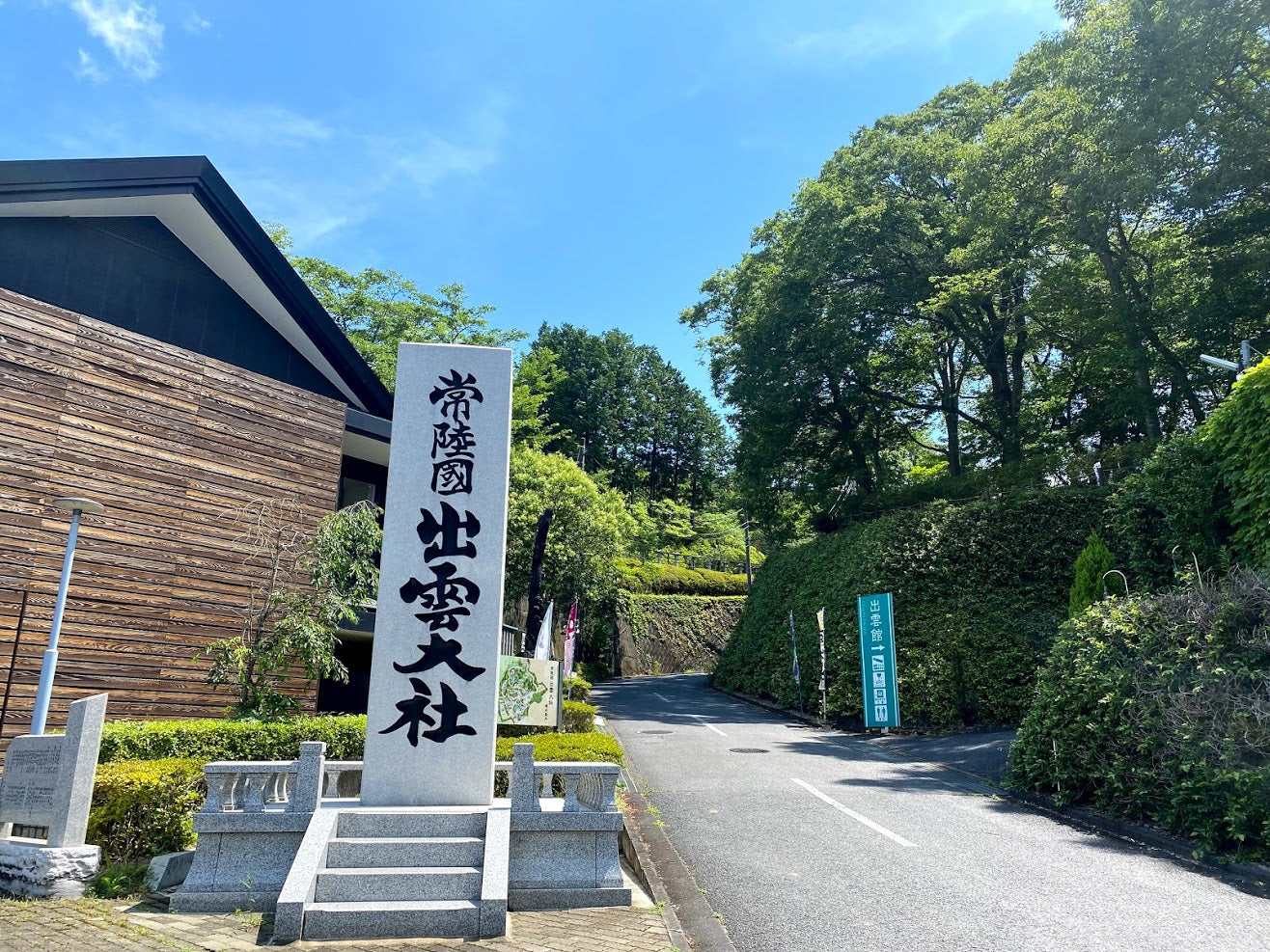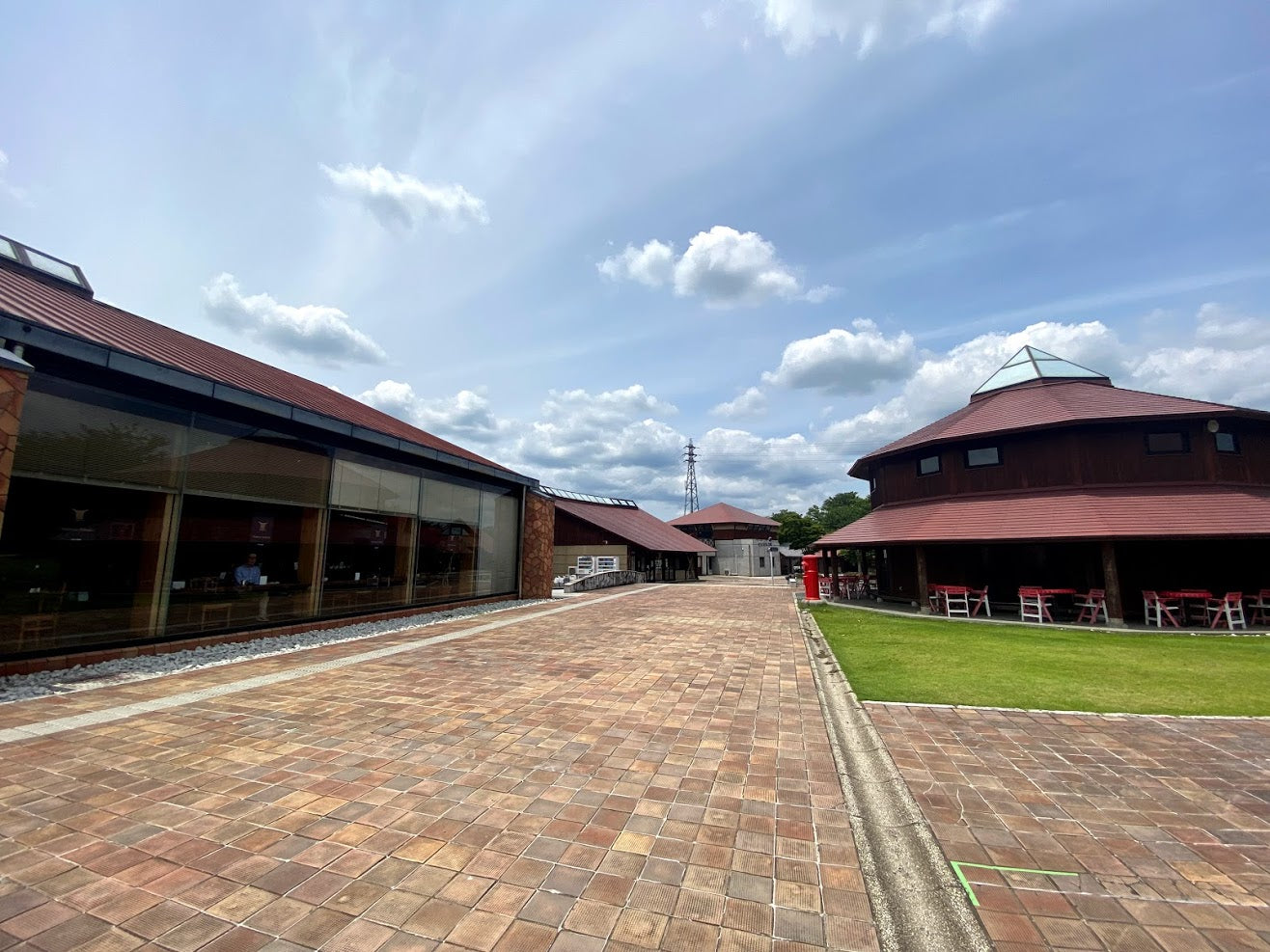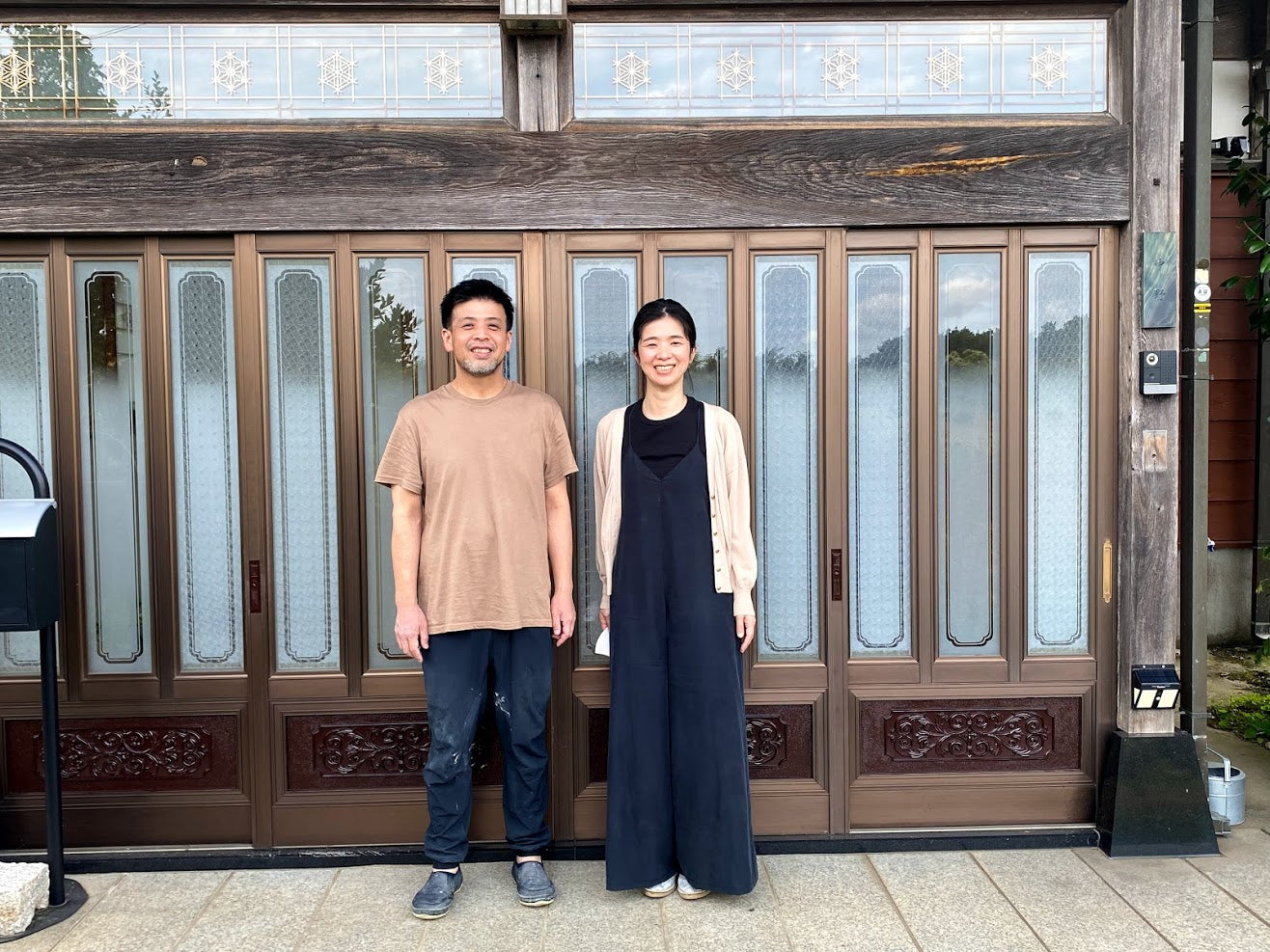This time we visited Kasama City, Ibaraki Prefecture, which is known as a pottery town.
Akihiko Nakano (hereinafter referred to as Mr. Nakano), a local potter, loves the natural environment of Kasama and works hard to create things while having fun and carefreely.
Kasama City is also popular for its artistic walks.
This time, along with a tour of Mr. Nakano's workshop, we also took a drive to some tourist attractions.
Breakfast at Tomobe Service Area
I was planning to visit various places in Kasama city, so I headed there by car.
It takes about 15 minutes
to get to the center of Kasama City by leaving the Tomobe IC on the Kita-Kanto Expressway and driving on National
Route 355.
If you are coming from the Tokyo area, you will need to take the Kita-Kanto Expressway from the Joban Expressway, but be sure to stop by the Tomobe Service Area along the Joban Expressway, as there is gourmet food that can only be tasted here. This is a spot you'll want to visit.

This is the Tomobe service area on the way down.
The store has a souvenir corner and food court, as well as
Starbucks coffee.

At the Tomobe service area on the way down, there is a "natto dog" that can only be tasted here.
Natto Dog,
which celebrated its 15th anniversary in 2021, is a B-class gourmet dish with sausage and plenty of natto sandwiched
between bread.
For those who are trying natto dogs for the first time, we recommend the "Original Natto Dog" (360 yen/tax included), which offers a simple taste among the three types on the menu.

This is the "Cheese Natto Dog" (390 yen/tax included) that is highly praised by the staff.
The combination of
the mild taste of the cheese that melted in the oven, the sweet sauce, and the natto dressed with Japanese mustard was
exquisite.
In addition, we also have the "Shirasu Natto Dog" (410 yen).
Ketchup and mustard are self-serve, so feel free to
use whatever you like.
First, say hello to Kasama Inari Shrine, which watches over the town of Kasama
After enjoying breakfast (breakfast bread?), we finally headed to Kasama City.
There are many things to see in Kasama City, but I headed to Kasama Inari Shrine to say "Thank you for your continued support today."

I went on the weekend, and since it was early in the morning, the approach to the shrine, which is usually crowded
with people, had a relaxed atmosphere.
There are stalls and souvenir shops on the side of the approach, so it's
fun to stroll around.

"Kasama Inari Shrine" is a famous shrine that is counted as one of the three major Inari shrines in Japan.
It is also known as a power spot, as you can expect many benefits from business prosperity to marriage.
As soon
as you step into the temple grounds, you will feel a very comfortable and energetic atmosphere.

There were many types of omikuji, but among them, the "kitsune omikuji" was a bit unique.
When you pull the
red string near the tail, the fortune slips will come out slowly from the tail.

After drawing the fortune, you can take the fox home with you, or many people display it in the shrine grounds.
Go to “Hitachikuni Izumo Taisha” where you can also see glass crafts
Next we headed to Hitachikuni Izumo Taisha Shrine, which is located in the middle of nature and is about a 15-minute drive from Kasama Inari Shrine.
Actually, this shrine was recommended to me by Mr. Nakano, who I will be visiting later, saying, "If you're going to Kasama, you should definitely check it out."

Since it's in a secluded area, I missed it once and got lost when I arrived.
The shrine is located on a small
hill.

There is a parking lot near the shrine, so you can go there by car.
The hall of worship, which is characterized
by the giant shimenawa rope that is the face of Izumo Taisha Shrine, is at the top of the stairs.

The scale of the shimenawa you can see up close is overwhelming.
By the way, when visiting shrines such as Kasama Inari Shrine, it is common to bow twice, clap once, but at Izumo Taisha, the etiquette is to bow twice, clap once, and then clap once.
Some theories say that clapping four times represents the four seasons, or that it shows respect to the gods who protect the north, south, east, and west.

After greetings at the worship hall, head to Izumokan, a glass workshop that also doubles as a coffee shop, located a little further down.

Glass crafts are lined up in the store, and you can also purchase them as souvenirs.
By the way, the head of this workshop is a chief priest.
You can also see the works created by Mr. Miyaji.
Fill yourself up at “Kasama Crafts Hill ~ Craft Hills Kasama”
After visiting two shrines that represent Kasama City, head to the town of pottery.
Before strolling along
Ceramics Street and Gallery Street, we will have lunch at "Kasama Craft Hills Kasama" located in Kasama Art Park.

"Kasama Craft Hills Kasama" has a hands-on class where you can make Kasama ware, as well as a souvenir corner and a permanent exhibition of ceramics.

There is a climbing kiln on the premises of Kasama Craft Hills Kasama, and you can also tour the inside of the kiln and the firing process.

The store carries works by various artists and can be purchased as souvenirs.

There is also a restaurant where you can have tea and meals, and since the weather was nice that day, we had a
refreshing soba on the terrace.
The soba noodles were handmade and very delicious.
Kasama pottery walk

Kasama Craft Hills - We received a free sightseeing map at Craft Hills Kasama and enjoyed a pottery walk around the workshops and galleries.
"Yakimono Dori" is a street where potteries that have continued for generations have their workshops.
Some workshops are open for tours, and some also hold pottery classes.
You can also purchase works at the
workshop, which also has a gallery.

There are about 10 shops directly managed by workshops on the "Ceramic Path" located halfway between Ceramics Street
and Gallery Road.
It's also a great opportunity to interact with artists and craftsmen.

Gallery Road is dotted with shops selling pottery selected by the owners and staff of each gallery.
"Kirara-kan" handles the works of more than 500 potters, with a total of 10,000 pieces.

There are also lots of works by local Kasama ware, Mashiko ware, and other artists from all over the country.
The store was crowded with a wide range of customers, including people who were leisurely shopping alone, people
with friends, and families.

Among the shops scattered along Gallery Road, the one that stood out to me was "Kairou Gallery Mon".
When special exhibitions are held, there are many visitors not only from the local area but also from Tokyo and
surrounding prefectures.
The store, which is a renovated old folk house, has a relaxing atmosphere, and works by
each artist are displayed.

The works of about 80 artists are always displayed in the corridors on both sides of the courtyard.
At the back
is a gallery space where solo exhibitions change every two weeks.

As I was looking at the works lined up in the corridor, the piece that caught my eye and struck me as wonderful was by Mr. Nakano, who I will be interviewing later.
The plate looks lively as it is bathed in natural light, which is very impressive.
I'm getting more and more
excited to meet you.
Finally, to Mr. Nakano's workshop
After visiting the shrine and enjoying the pottery town, we finally went to Mr. Nakano's workshop.

Mr. Akihiko Nakano who welcomed us warmly.
In the kiln attached to the side of the main building, there are rows of pieces lined up just before firing.
What Mr. Nakano values when making pottery is that it is easy to use.
We strive to create products that are not just pieces that can be displayed as artworks, but instead become "regular" products that can be used continuously in everyday life.
Although they are based in Kasama, they mainly use white clay instead of the red clay that is characteristic of Kasama ware.
“In Kasama, people especially say, "This is Kasama ware! "There's no definition.
Each workshop and craftsman
expresses it in their own way.
It's free and unrestricted, which makes it fun to make things," says Nakano.

Flat plates are the most popular of Nakano's works.
The large plate can be used to enjoy meals such as rice,
bread, and salad in one plate format.

As more people are spending more time at home and drinking alcohol at home, works such as goblets are also attracting attention.

This is a sake drinking glass.
The modern color sense is also unique to Nakano's work.
Also, the drinking spout is rounded to prevent it from chipping, which gives the drink a somewhat milder taste.

The tea utensils, tea platters, and flower vases that we received were also made by Mr. Nakano.
By the way, for the sweets, I received Kasama's specialty Japanese sweets, "Kurimangetsu."
Spending time while
enjoying the gentle breeze is truly bliss.

After hearing about his passion for creating his works, we visited his workshop and observed the process of completing the plates, which are popular products.
First, we will knead the soil and prepare it for turning on the potter's wheel.

When making a flat plate, place the plate on the potter's wheel to avoid distortion.

We use the potter's wheel to remove the texture of the soil.
The shape moves up and down, just like a living
thing, and you can't help but notice it.

The scales used when making plates are handmade by Mr. Nakano, and he has been using them for many years.

When it is raw and soft, it is difficult to tell how flat it is, so the moment when it is separated from the potter's wheel is the most stressful.

The shinogi is removed from the potter's wheel and placed on a slightly dry plate.
It is a work that requires a
sense of rhythm as it is carved at equal intervals.

After carving and letting it dry further, we will take the corners of the bottom part and make final adjustments.
"If we make it too thin, it will become unreliable, so we try to keep it thick to a certain extent."
In Mr.
Nakano's works, you can feel the care he takes in the image of everyday use.

Finally, stamp the name with your initials, and the plate shape is complete.

Once the plate is shaped, it is dried in the sun before being fired.
Natural light pours into the courtyard of
Mr. Nakano's workshop, and the works look somehow comfortable.

After being unglazed or glazed and dried, the actual firing in the kiln is done about twice a month.
Mr. Nakano's works are all full of warmth that can only be achieved by handmade products.
Mr. Nakano says that he always wants to try new things without being satisfied with the status quo.
What he wants to
try now is gold painting.
“A tableware with a black body and gold accents has a classy feel to it. However, if you use gold, you won't be able to use it on a daily basis, so that's an issue. But someday I'll show it to everyone. I will try without giving up so that I can do it."
Mr. Nakano's enthusiasm for manufacturing never stops.
Creating things that each couple can enjoy
Mr. Nakano's partner, Tomoko, is also active as a writer and makes miscellaneous goods using Japanese patterns.

The atelier is on the second floor of the main building.
A comfortable space surrounded by soft light.

We make handmade items for everyday use under the brand name "Tsuki."
This is a tissue case with a removable
strap.
Since we produce small quantities and do not make the same items, you can get exactly one-of-a-kind items.

The two are friendly and have a smile on their faces.
The reason why Nakano's work is warm may be because his personality is projected.
As a souvenir, Ibaraki's specialty "natto"
On the way back, I stopped by the Tomobe service area and searched for souvenirs for travel.

Speaking of Ibaraki Prefecture, natto is famous, but there is a showcase in this service area with various
manufacturers natto.
The package is also unique, so it is perfect for souvenirs.

Speaking of souvenirs unique to Kasama City, sweets using chestnuts.
In addition to souvenirs in the box, there are also individual packaging, so you can use it for your snack.
It was a quick day
Kasama City was able to relax because the whole city was full of gentle air.
I feel that the air feeling is somewhat shown in Nakano's style.
I couldn't see all the gallery roads and gallery roads, so I would like to visit them soon as a drive.
B -class gourmet is likely to be a lot, so next time we are planning a plan to enjoy food trips.

May you enjoy your daily meals with your favorite utensils.